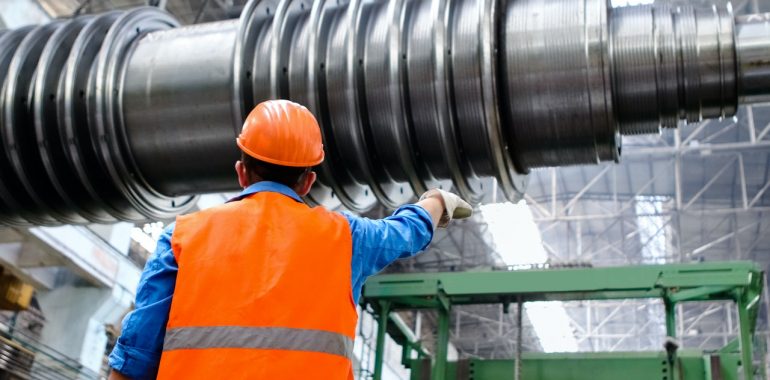In the dynamic landscape of manufacturing, technology stands as the driving force propelling the industry into realms that were once the stuff of science fiction. From the revolutionary strides in additive manufacturing to the seamless orchestration enabled by artificial intelligence, a new era has dawned upon us.
Over the past decade, remarkable advancements have truly taken center stage, igniting a revolutionary transformation in the manufacturing process. There’s been this amazing shift towards using all sorts of cool new tech to make things better, faster, and more precise. Take CNC plasma tables, for example. They are being eagerly adopted by manufacturing sectors in large numbers, especially from suppliers offering top-notch cnc plasma tables for sale. And, they can be the superheroes of metal fabrication, offering levels of accuracy that were just unheard of before. Then there’s 3D printing. It’s like something straight out of a sci-fi movie, but now it’s becoming a normal part of how things get made. Plus, there is the whole automation and robotics scene that’s totally changing the game. It’s like having a team of super-efficient robots working tirelessly to make the process and operations run perfectly. And let’s not forget about augmented reality and virtual reality. They are not just for gaming anymore. Now, they are also helping manufacturing industries learn the ropes in immersive training sessions and letting designers see their creations in a whole new light.
Notably, additive manufacturing has emerged as a game-changer, revolutionizing the production of intricate components such as control valve parts, turbine parts, and Fisher parts through three-dimensional printing techniques. Concurrently, the seamless orchestration facilitated by artificial intelligence has ushered in a new era of efficiency and precision. This blog aims to delve into the transformative impact of additive manufacturing, computerized maintenance systems, digital twins, automation integration, and artificial intelligence, showcasing their role in reshaping the manufacturing landscape and optimizing the production of specialized components like control valve parts, turbine parts, and Fisher parts.
Building the Future With Fabrication
Technology is shaping the future, and fabrication processes are at the forefront of this transformation. Among these, a standout process is Plastic fabrication by TK Fabrications and similar companies, leveraging cutting-edge technology to redefine manufacturing standards. With advancements in plastic fabrication techniques, intricate designs, and precise components are becoming more accessible than ever before. The integration of technology not only enhances the speed and efficiency of fabrication but also opens up new possibilities for creating lightweight, durable, and complex structures. Whether it’s precision molding or CNC machining, the collaboration between technology and people is building the foundation for the future of manufacturing, where innovation and efficiency go hand in hand.
Bridging the Physical and Digital Realms
The concept of digital twins has ushered in a new era of connectivity and efficiency in manufacturing. A digital twin is a virtual replica of a physical object or system, allowing manufacturers to simulate and analyze real-world scenarios without the need for physical prototypes. This technology not only facilitates the design and testing phases but extends its influence throughout the product lifecycle. By integrating sensors and IoT devices, manufacturers can create a dynamic link between the physical and digital realms, enabling real-time monitoring, predictive maintenance, and optimization of operational processes. The result is a more agile and responsive manufacturing ecosystem, minimizing downtime and maximizing productivity.
Orchestrating Seamless Efficiency
Automation has long been a driving force in manufacturing, but recent advancements are taking it to new heights. The integration of automation systems across the manufacturing floor is streamlining processes, enhancing precision, and improving overall efficiency. Robotics and cobots (collaborative robots) are becoming commonplace, working alongside human operators to perform repetitive tasks and intricate operations with equal finesse. Further, the implementation of a cutting-edge ‘schwingfrderrinne‘ (vibrating trough conveyor) can optimize material handling, showcasing how technology synergies can lead to a seamless and efficient manufacturing process. Such practices not only boost productivity but also enhance workplace safety by relegating hazardous tasks to machines. From assembly lines to warehouse management, automation is revolutionizing the manufacturing landscape, allowing human workers to focus on higher-order tasks that require creativity and problem-solving.
Final Thoughts
As we stand at the precipice of the Fourth Industrial Revolution, the amalgamation of additive manufacturing, digital twins, and automation, all orchestrated by the intelligence of artificial intelligence, is redefining the manufacturing landscape. These technologies, once the dreams of futurists, are now integral components of the modern manufacturing toolkit. When leveraged correctly, they hold the key to unprecedented efficiency, innovation, and sustainability. The journey from science fiction to reality is not just a testament to human ingenuity but a promise of a manufacturing future where the impossible becomes routine, and the routine becomes extraordinary. As we navigate this technological renaissance, the question is not whether these advancements will continue but how we, as a society, will harness them to shape a manufacturing landscape that is not only smarter and more efficient but also sustainable and inclusive.
The accompanying resource describes more of these technologies and the innovative ways that the manufacturing industry is relying on these advances.







